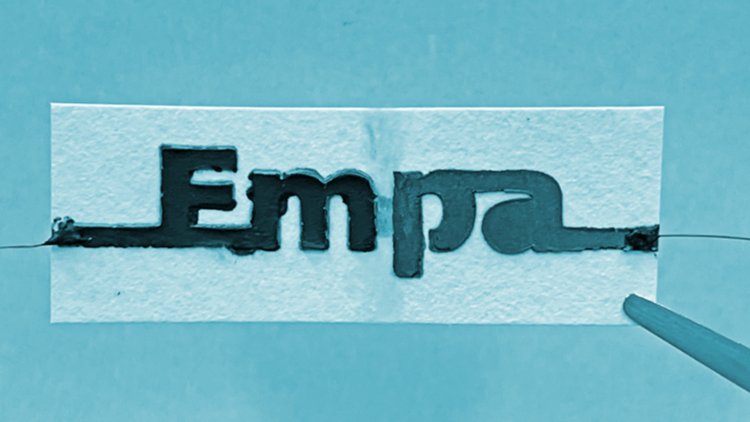A disposable paper battery works with two drops of water
The battery is used to power disposable low-power electronics, from smart stickers, through environmental sensors, to medical diagnostic devices.

A disposable water-activated paper battery is presented in a study verifying this innovative concept in the journal Scientific Reports. The authors, researchers at the Swiss Federal Institute for Materials Science and Technology ( Empa ), suggest that this battery could be used to power a wide range of low-power disposable electronics, such as smart stickers, environmental sensors, medical diagnostic devices, and minimize their impact on the environment along the way.
Three inks on paper
The battery consists of at least one square centimeter cell and three inks printed on a rectangular strip of paper. Sodium chloride salt is spread over a strip of paper, and one of its shorter ends is dipped in wax. Graphite flake ink, which acts as the positive end of the battery (cathode), is printed on one of the flat sides of the paper, and zinc powder ink, which acts as the negative end of the battery (anode), is printed on the back of the paper.
In addition, ink containing graphite flakes and carbon black is printed on both sides of the paper, on top of the other two inks. This ink connects the positive and negative ends of the battery to two wires located on the end of the paper dipped in wax.
Adding a small amount of water dissolves the salts inside the paper and releases the charged ions. These ions activate the battery by spraying through the paper, and the zinc in the ink at the negative end of the battery releases electrons.
A wire attached to the device closes the circuit so that electrons can be transferred from the negative end – via ink containing graphite and soot, the wire, and the device – to the positive end with ink containing graphite, where they are transferred to oxygen in the surrounding air. These reactions create an electrical current that can be used to power devices.
Performance analysis of the single-cell battery revealed that after adding two drops of water, the battery activated within 20 seconds and, when not connected to a power-consuming device, achieved a stable voltage of 1.2 volts. The voltage of a standard AA alkaline battery is 1.5 volts.
Impact on the environment
After one hour, the performance of the single-cell battery decreased significantly due to the drying of the paper. However, after two more drops of water were added, a stable operating voltage of 0.5 volts was maintained for more than an additional hour.
The authors suggest that the biodegradability of paper and zinc could allow their battery to minimize the environmental impact of low-power disposable electronics. They also propose to further increase the battery's sustainability by reducing the amount of zinc used within the ink, which also allows precise control of the amount of electricity produced by the battery.
Post by Bryan C.





































